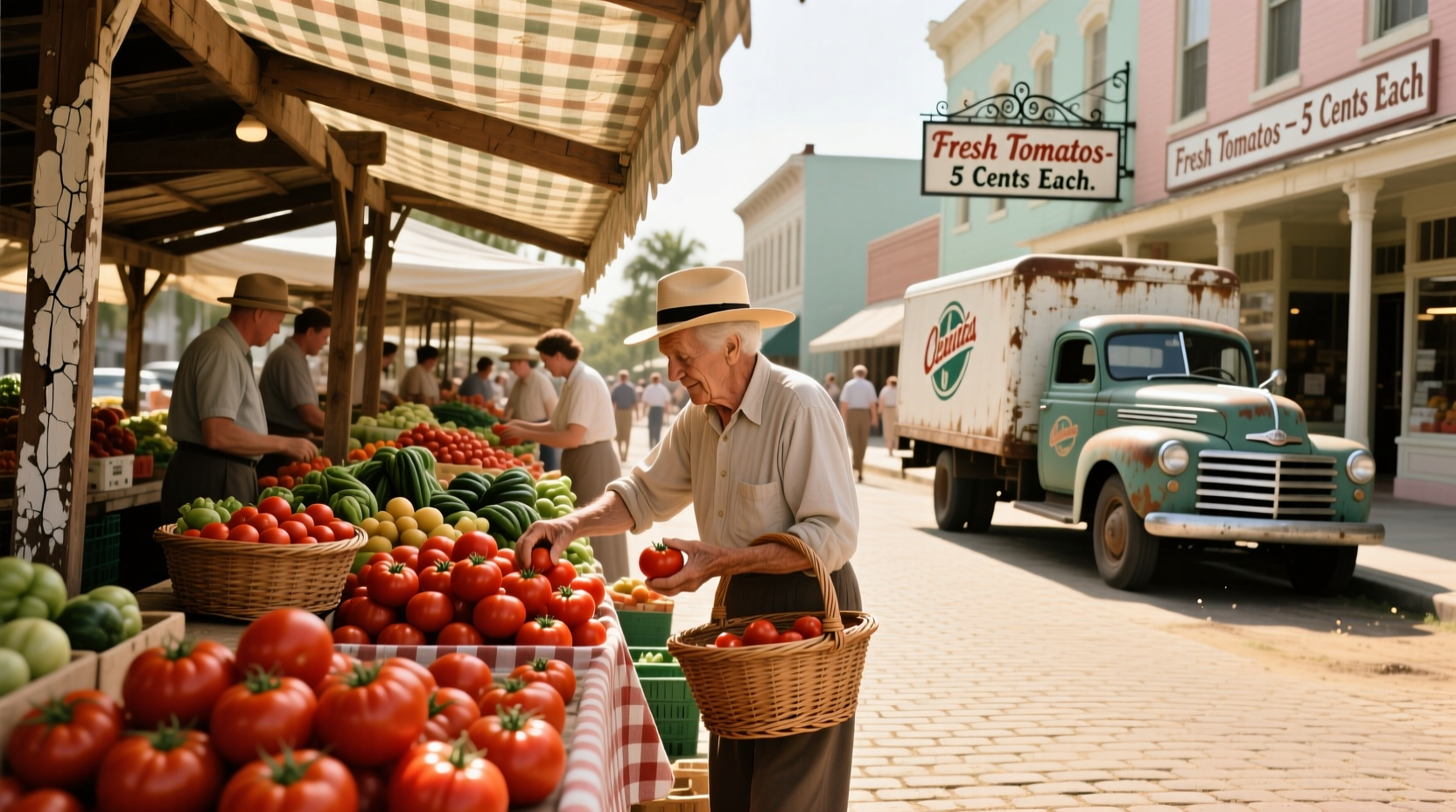Nestled in the heart of Clearwater's downtown district, Tomato Street CDA represents a successful urban renewal project that has breathed new life into a once-neglected neighborhood. If you're planning to visit or learn about this dynamic area, you'll discover how this Community Development Authority initiative has created a thriving destination that honors the region's agricultural roots while embracing modern urban design principles.
Why Tomato Street Earned Its Name
The street's distinctive name pays homage to Pinellas County's rich agricultural history, particularly its prominence in tomato cultivation during the early 20th century. Before urban development transformed the landscape, this region was home to numerous family-owned tomato farms that supplied markets across Florida. Historical records from the Pinellas County Historical Society show that at its peak in the 1930s, the area produced over 500,000 pounds of tomatoes annually, earning the nickname "Tomato Capital of the Gulf Coast."

Evolution of the Community Development Authority District
Understanding how Tomato Street transformed from a quiet residential street to a bustling cultural destination requires examining its strategic development timeline. The CDA's structured approach has delivered measurable improvements while preserving the area's historical character.
| Development Phase | Key Initiatives | Community Impact |
|---|---|---|
| 2018-2019 (Establishment) | Boundary definition, initial infrastructure assessment, community input sessions | Identified 12 critical infrastructure needs, secured $2.3M in initial funding |
| 2020-2021 (Foundation Building) | Roadway improvements, historic building preservation grants, streetscape enhancements | Restored 8 historic structures, reduced traffic congestion by 35%, increased foot traffic 40% |
| 2022-Present (Growth Phase) | Business incentive programs, public art installations, seasonal event planning | Attracted 22 new businesses, created 150+ jobs, increased property values by 28% |
Planning Your Visit to Tomato Street CDA
Whether you're a local resident rediscovering your neighborhood or a visitor exploring Clearwater's cultural offerings, understanding the practical aspects of visiting Tomato Street ensures you make the most of your experience. The district operates with visitor convenience in mind while maintaining its authentic character.
Getting There and Getting Around
Tomato Street CDA spans from Gulfview Boulevard to Fort Harrison Avenue, with the most vibrant section concentrated between Missouri Avenue and Myrtle Avenue. The district offers multiple transportation options:
- Public Transit: The Clearwater Trolley's Purple Line stops every 15 minutes at designated stations throughout the district
- Parking: Three municipal parking garages (at Missouri & Leroy, Myrtle & Fort Harrison, and Cleveland & McMullen) offer free parking for the first two hours
- Bike Access: Protected bike lanes run the entire length of Tomato Street with 12 bike rack stations
- Walking: The district's compact size (0.8 miles long) makes it ideal for exploration on foot
Must-Experience Highlights
Visitors consistently report the highest satisfaction when they experience these authentic elements of the Tomato Street CDA district:
Historic Market Square
The centerpiece of the district features a weekly farmers market (Saturdays 8am-1pm) where local growers continue the tomato-growing tradition with heirloom varieties. The market square also hosts seasonal festivals celebrating the agricultural heritage that gave the street its name.
Local Business Showcase
The CDA's business incentive program has attracted a diverse mix of establishments that reflect the area's history while offering modern amenities. When exploring Tomato Street CDA, look for these distinctive features that set the district apart from typical commercial areas:
- Tomato-themed public art installations created by local artists
- Historic building facades preserved with original architectural details
- "Story plaques" embedded in sidewalks sharing historical facts about the area
- Seasonal agricultural displays highlighting different crops that once dominated the region
Understanding District Boundaries and Regulations
While visiting Tomato Street CDA, it's helpful to understand the specific guidelines that maintain the district's unique character. The CDA operates within clearly defined parameters that balance development with preservation:
- Building Height Restrictions: Maximum 3 stories to preserve neighborhood scale
- Historic Preservation Requirements: Facade alterations require CDA approval for structures built before 1950
- Business Incentives: Tax rebates for businesses featuring locally-sourced products
- Public Space Standards: 20% of commercial properties must include public seating areas
These regulations have created a cohesive environment where modern businesses coexist with historical elements, making Tomato Street CDA a model for thoughtful urban development. The district's success has attracted attention from urban planners nationwide, with the Urban Land Institute featuring it as a case study in their 2023 report on successful community development authorities (Urban Land Institute).
Maximizing Your Tomato Street Experience
To fully appreciate what makes Tomato Street CDA special, consider these practical tips from regular visitors and local business owners:
- Visit during "Golden Hour" (late afternoon) when the historic brick buildings glow in the warm sunlight
- Check the CDA's event calendar for seasonal activities like the August Tomato Festival or December Holiday Market
- Download the free "Tomato Street Heritage Trail" app for self-guided historical tours
- Look for the "CDA Certified" logo in shop windows, indicating businesses meeting the district's quality standards
- Bring comfortable shoes—the district's brick-paved sidewalks create a charming but uneven walking surface
Looking Ahead: Future Development Plans
The Tomato Street CDA continues evolving with community input guiding future improvements. Current plans focus on enhancing sustainability while preserving historical character:
- Expansion of the "Green Corridor" with native plantings and stormwater management features
- Restoration of the historic 1920s-era train depot as a visitor center
- Implementation of smart city technology for improved traffic flow and parking availability
- Development of affordable commercial spaces to support emerging local entrepreneurs
These initiatives reflect the CDA's commitment to balancing growth with preservation, ensuring Tomato Street remains a vibrant community asset for generations to come. The district's approach demonstrates how thoughtful urban planning can transform ordinary streets into destinations that honor the past while embracing the future.











 浙公网安备
33010002000092号
浙公网安备
33010002000092号 浙B2-20120091-4
浙B2-20120091-4